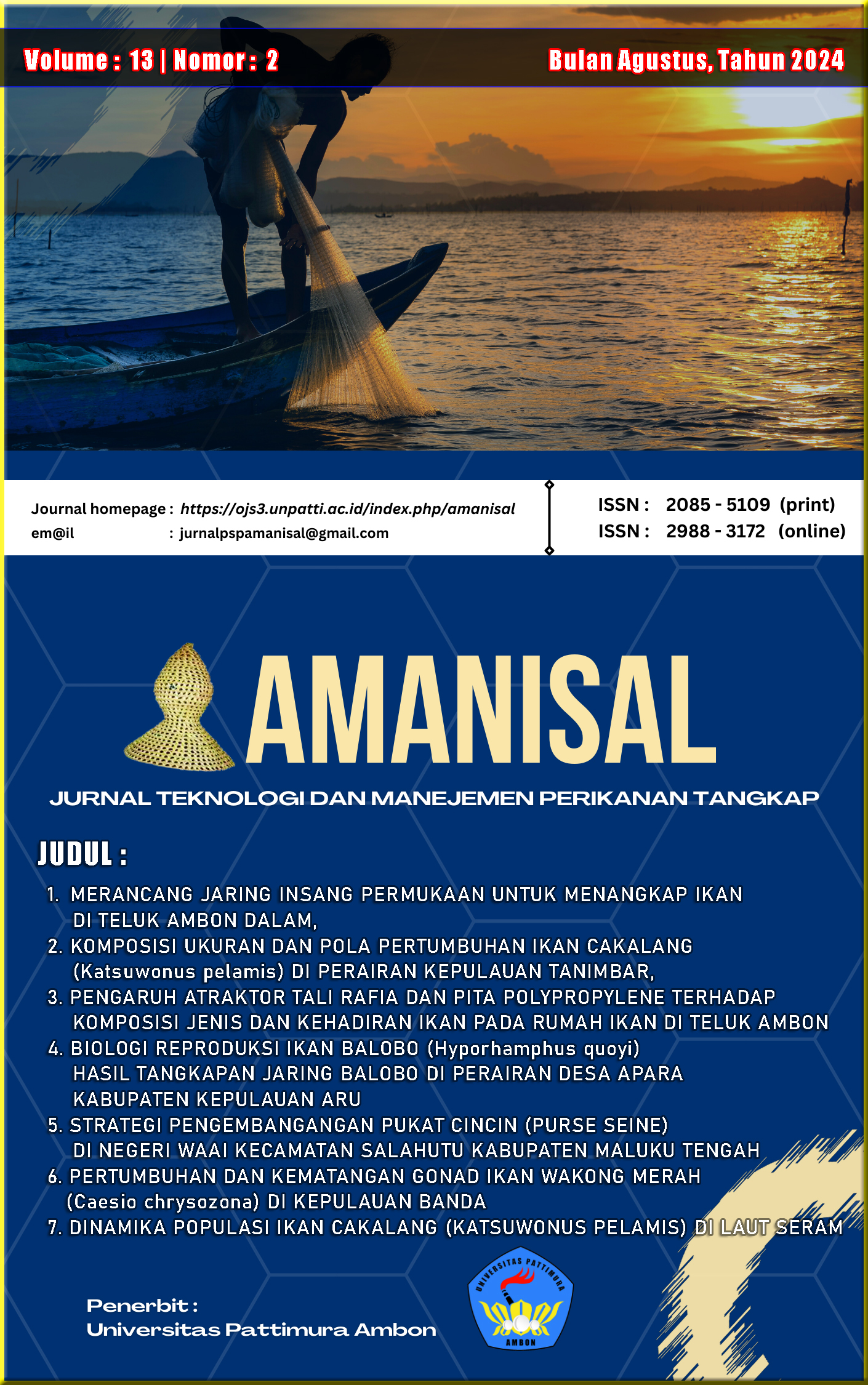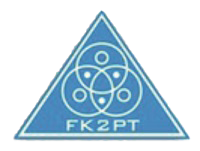MERANCANG JARING INSANG PERMUKAAN UNTUK MENANGKAP IKAN DI TELUK AMBON DALAM
Abstract
The use of gill nets in fishing is a well-established practice among fishermen due to several factors including ease of material acquisition, simple operational techniques, relatively affordable costs, and high selectivity in catching fish of specific sizes. This study aims to describe the design of fishing gill nets in Inner Ambon Bay. The research was conducted at the Ambon Fisheries Training and Extension Center (BP) in April and May of 2024. The design and construction of surface gillnets for mackerel scad consist of mesh size (inches), fish body circumference, net length, hanging ratio, weights, and distance between floats and weights. The design of the surface gill net with a 2-inch mesh size and a 45% hanging ratio has proven to be effective in catching mackerel scad (Decapterus sp) ranging from 17 cm to 26 cm in length. The use of polyamide (PA) material for the net body provides the necessary strength and flexibility, while the float made of polyvinyl chloride (PVC) and lead weights ensures balanced distribution for optimal functioning in the water. A 45% hanging ratio provides an ideal balance between net length and fish trapping ability, avoiding nets that are too curved or stiff, which can reduce fishing effectiveness.
Downloads
Copyright (c) 2024 The Author(s)

This work is licensed under a Creative Commons Attribution-ShareAlike 4.0 International License.






